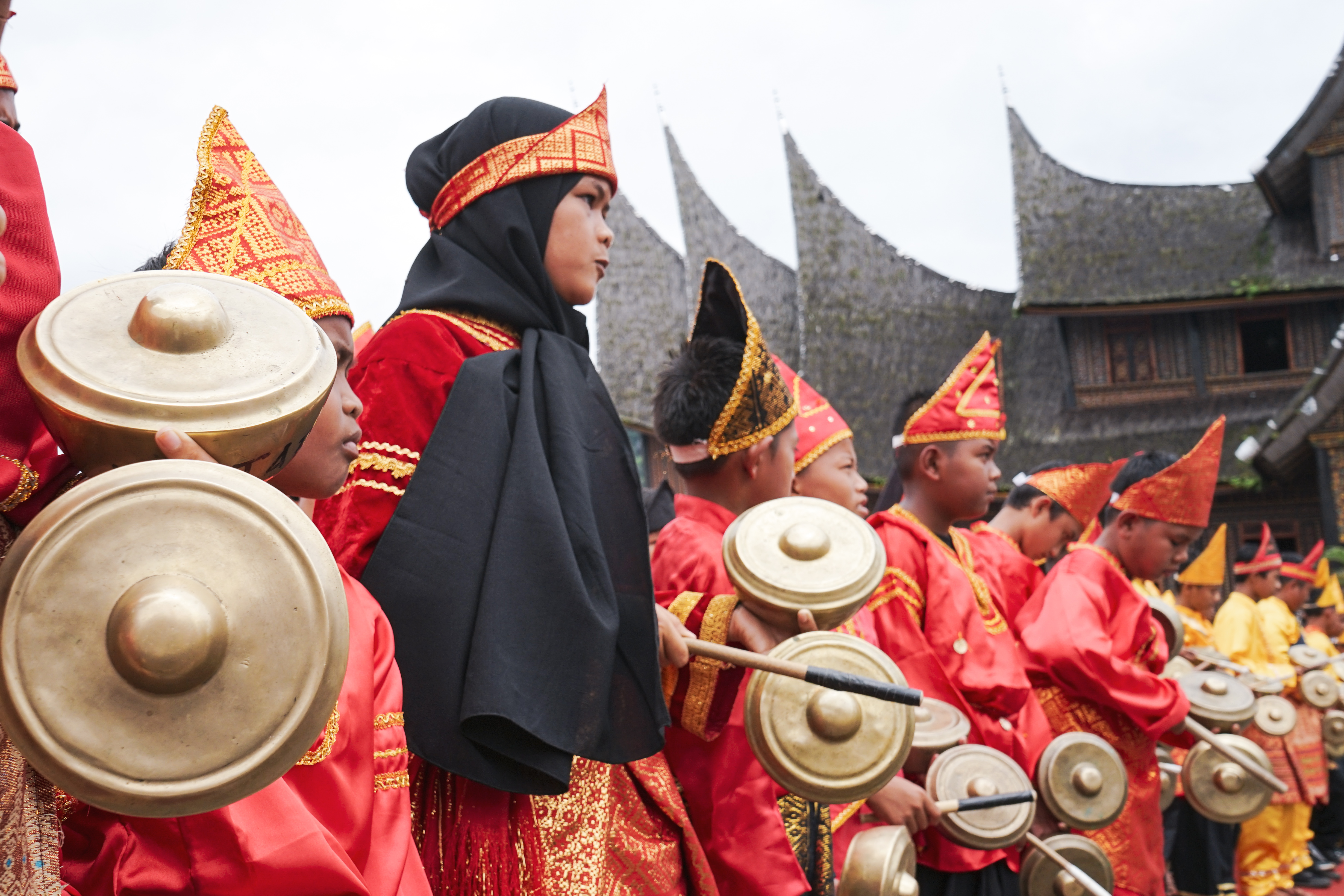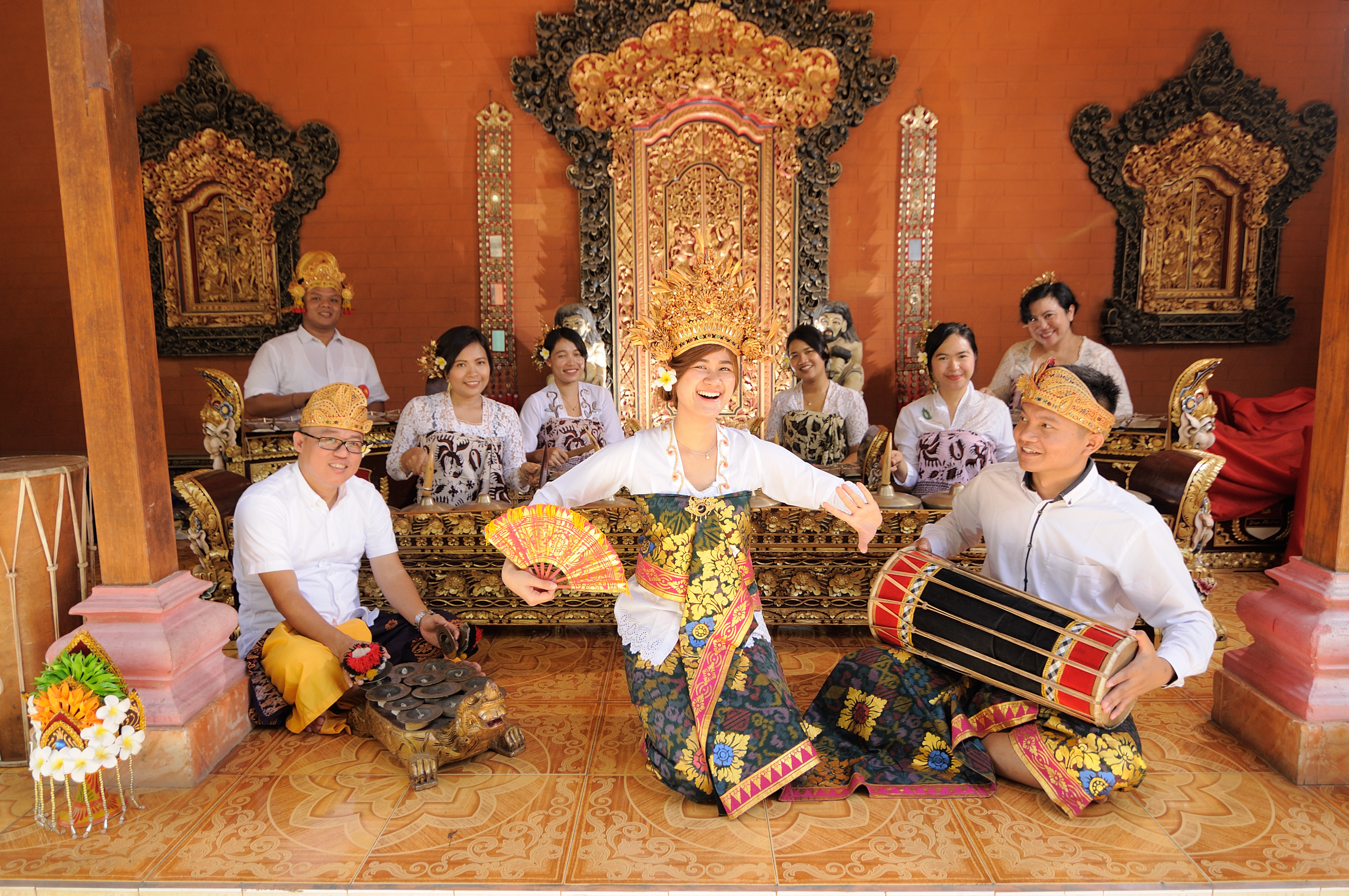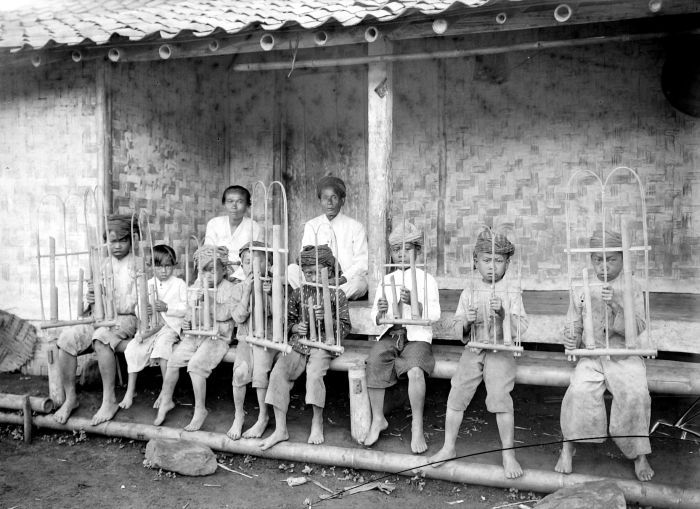|
Music Of Sumatra
The Music of Sumatra, Sumatra is a part of Indonesia; its best-known musical output is probably dangdut, a rabab/ saluang instrumental style. The Sumatran Toba people are distinctive in their use of tuned drums to carry the melody in their music; this practice is very rare worldwide. The Toba also use an instrument similar to the oboe and several kinds of gongs. Ensembles include the '' gondang sabangunan''. The Mandailing people is one of the ethnic group from the Province of North Sumatra. Their cultural heritage is the Gordang sambilan (nine drums graded in size from large to small), complemented by two big gongs (''agung''), a bamboo flute called ''sarune'' or ''saleot'', and a pair of small cymbals called ''tali sasayat''. Films *2007 – Sumatran Folk Cinema' (dir. Mark Gergis and Alan Bishop; Sublime Frequencies) See also * Music of Indonesia * Music of Sunda * Music of Java * Music of Bali The Music of Bali, Bali is an Indonesian island that shares in the gamela ... [...More Info...] [...Related Items...] OR: [Wikipedia] [Google] [Baidu] |
Talempong Pacik2
Talempong is a traditional music of the Minangkabau people of Western Sumatra, Indonesia. The talempong produce a static texture consisting of interlocking rhythms. A talempong a small kettle gong which gives its name to an ensemble of four or five talempong as well as other gongs and drums. The term can refer to the instrument, the ensemble, or the genre of music. Talempong is in the form of a circle with a diameter of 15 to 17.5 centimeters, with a hollow hole at the bottom while at the top there is a roundabout with a diameter of five centimeters as a place to be hit. Talempong has a different tone. The sound is produced from a pair of wood hammered on its surface. In 2019 and 2021, The Talempong Unggan and The Talempong Pakcik were recognized as National Intangible Cultural Heritage of Indonesia by the Indonesian Ministry of Education and Culture. On December 15, 2021, UNESCO officially recognized Gamelan which includes a musical instrument of Talempong as a Masterpiec ... [...More Info...] [...Related Items...] OR: [Wikipedia] [Google] [Baidu] |
Mandailing People
The Mandailing is an ethnic group in Sumatera, Indonesia that is commonly associated with the Batak people. They are found mainly in the northern section of the island of Sumatra in Indonesia. They came under the influence of the Kaum Padri who ruled the Minangkabau of Tanah Datar. As a result, the Mandailing were influenced by Muslim culture and converted to Islam. There are also a group of Mandailing in Malaysia, especially in the states of Selangor and Perak. They are closely related to the Angkola. Etymology The etymology of 'Mandailing' is said to be a compounding of the words ''mande'', meaning 'mother', and ''hilang'', meaning 'lost'. Thus, the name is said to mean "lost mother". The Mandailing society is patriarchal, employing family names, or '' marga''. The well known margas in Mandailing clan are:Lubis, Nasution, Siregar, Ritonga, Hasibuan, Harahap, Dalimunthe (originally from Munthe), Matondang, Rangkuti, Parinduri, Puasa, Pulungan, Rambe, Daulae(y), Pohan, Ba ... [...More Info...] [...Related Items...] OR: [Wikipedia] [Google] [Baidu] |
Music Of Bali
The Music of Bali, Bali is an Indonesian island that shares in the gamelan and other Indonesian musical styles. Bali, however, has its own techniques and styles, including kecak, a form of singing that imitates the sound of monkeys. In addition, the island is home to several unique kinds of gamelan, including the gamelan jegog, gamelan gong gede, gamelan gambang, gamelan selunding and gamelan semar pegulingan, the cremation music angklung and the processional music bebonangan. Modern popular styles include gamelan gong kebyar, dance music which developed during the Dutch occupation and 1950s era joged bumbung, another popular dance style. In Balinese music you can also hear metallophones, gongs and xylophones. Characteristics More than 50 people must be dancing during the music. Balinese music can be compared to Javanese music, especially that of the pre-Islamic period. During that time, Javanese tonal systems were imported to Bali. Balinese gamelan, a form of In ... [...More Info...] [...Related Items...] OR: [Wikipedia] [Google] [Baidu] |
Music Of Java
The Music of Java embraces a wide variety of styles, both traditional and contemporary, reflecting the diversity of the island and its lengthy history. Apart from traditional forms that maintain connections to musical styles many centuries old, there are also many unique styles and conventions which combine elements from many other regional influences, including those of neighbouring Asian cultures and European colonial forms. Gamelan The gamelan orchestra, based on metallic idiophones and drums, is perhaps the form which is most readily identified as being distinctly "Javanese" by outsiders. In various forms, it is ubiquitous to Southeast Asia. In Java, the full gamelan also adds a bowed string instrument (the rebab, a name illustrative of Islamic influence), plucked siter, vertical flute suling and voices. The rebab is one of the main melodic instruments of the ensemble, together with the metallophone gendér; these and the kendang drums are often played by the most experie ... [...More Info...] [...Related Items...] OR: [Wikipedia] [Google] [Baidu] |
Music Of Sunda
Sundanese Music ( Sundanese: ) is an umbrella term that encompasses diverse musical traditions of the West Java and Banten in western part of Java, Indonesia. The term of "West Java" is preferred by scholars in this field. The word "Sundanese" originally referred to western part of Java Island and has a strong association with the highly centralized Sunda Kingdom based on Java Island and its high culture practiced by the nobleman class in its capital Parahyangan. By contrast, scholars who cover a much broader region lay emphasis on folk culture. The people of Sundanese, who inhabit the Westernmost third of the island of Java, are sometimes wrongly referred to by foreigners as Javanese. Sundanese culture, language and music are quite distinct from those of the Javanese people of Central and East Java - although of course there are also elements in common. In Sunda there is a bewildering diversity of musical genres, musical composition and tuning systems are recognizably di ... [...More Info...] [...Related Items...] OR: [Wikipedia] [Google] [Baidu] |
Music Of Indonesia
As it is a country with many different tribes and ethnic groups, the music of Indonesia ( id, Musik Indonesia) itself is also very diverse, coming in hundreds of different forms and styles. Every region have its own culture and art, and as a result traditional music from area to area also uniquely differs from one another. For example, each traditional music are often accompanied by their very own dance and theatre. Contemporary music scene have also been heavily shaped by various foreign influences, such as America, Britain, Japan, Korea, and India. The music of Java, Sumatra, Bali, Flores (Lesser Sunda Islands) and other islands have been well documented and recorded, and further research by Indonesian and international scholars is also ongoing. The music in Indonesia predates historical records, various Native Indonesian tribes often incorporate chants and songs accompanied with musical instruments in their rituals. The contemporary music of Indonesia today is also popula ... [...More Info...] [...Related Items...] OR: [Wikipedia] [Google] [Baidu] |
Sublime Frequencies
Sublime Frequencies is a record label based in Seattle, Washington that focuses exclusively on "acquiring and exposing obscure sights and sounds from modern and traditional urban and rural frontiers," mostly from Southeast Asia, North Africa and West Africa and the Middle East. The releases are usually divided into four categories: field recordings, folk and pop compilations, radio collages from specific geographic locales, and DVDs. The label is headed by Alan Bishop and Hisham Mayet. Its releases are produced in limited quantities, usually up to a thousand copies. Its mission statement is: Sublime Frequencies is a collective of explorers dedicated to acquiring and exposing obscure sights and sounds from modern and traditional urban and rural frontiers via film and video, field recordings, radio and short wave transmissions, international folk and pop music, sound anomalies, and other forms of human and natural expression not documented sufficiently through all channels of aca ... [...More Info...] [...Related Items...] OR: [Wikipedia] [Google] [Baidu] |
Alan Bishop
Alan Bishop is an American musician best known for being the bassist and vocalist of experimental rock band Sun City Girls. . Retrieved 11 January 2010 He has also released solo material under the aliases Alvarius B. and Uncle Jim. In the early 1980s Bishop played in the short-lived band Paris 1942 with Maureen Tucker of the , and was briefly a member of |
Mark Gergis
Mark may refer to: Currency * Bosnia and Herzegovina convertible mark, the currency of Bosnia and Herzegovina * East German mark, the currency of the German Democratic Republic * Estonian mark, the currency of Estonia between 1918 and 1927 * Finnish markka ( sv, finsk mark, links=no), the currency of Finland from 1860 until 28 February 2002 * Mark (currency), a currency or unit of account in many nations * Polish mark ( pl, marka polska, links=no), the currency of the Kingdom of Poland and of the Republic of Poland between 1917 and 1924 German * Deutsche Mark, the official currency of West Germany from 1948 until 1990 and later the unified Germany from 1990 until 2002 * German gold mark, the currency used in the German Empire from 1873 to 1914 * German Papiermark, the German currency from 4 August 1914 * German rentenmark, a currency issued on 15 November 1923 to stop the hyperinflation of 1922 and 1923 in Weimar Germany * Lodz Ghetto mark, a special currency for Lodz Ghetto. * ... [...More Info...] [...Related Items...] OR: [Wikipedia] [Google] [Baidu] |
Gordang Sambilan
Gordang sambilan is a kendang (Indonesian version of drum) musical instrument originating from North Sumatra, Indonesia. Gordang sambilan consists of nine relatively large and long drums (drum chime) made of ingul wood and played by four people. The size and length of the nine drums are stratified, starting from the largest to the smallest. For Mandailing people, especially in the past, gordang sambilan was a very important sacred traditional music. Gordang sambilan is seen as sacred because it is believed to have supernatural powers to summon ancestral spirits to provide help through a medium or shaman called Sibaso. Instrument Gordang Sambilan consists of nine drums that are relatively large and long. The nine drums have successive sizes from the largest to the smallest size. The Gordang Sambilan resonator tube is made of perforated wood and one end of the hole (the head) is covered with a membrane made of cowhide which is stretched with rattan as a fastener. As a beating to ... [...More Info...] [...Related Items...] OR: [Wikipedia] [Google] [Baidu] |
Sumatra
Sumatra is one of the Sunda Islands of western Indonesia. It is the largest island that is fully within Indonesian territory, as well as the sixth-largest island in the world at 473,481 km2 (182,812 mi.2), not including adjacent islands such as the Simeulue, Nias, Mentawai, Enggano, Riau Islands, Bangka Belitung and Krakatoa archipelago. Sumatra is an elongated landmass spanning a diagonal northwest–southeast axis. The Indian Ocean borders the northwest, west, and southwest coasts of Sumatra, with the island chain of Simeulue, Nias, Mentawai, and Enggano off the western coast. In the northeast, the narrow Strait of Malacca separates the island from the Malay Peninsula, which is an extension of the Eurasian continent. In the southeast, the narrow Sunda Strait, containing the Krakatoa Archipelago, separates Sumatra from Java. The northern tip of Sumatra is near the Andaman Islands, while off the southeastern coast lie the islands of Bangka and Belitung, ... [...More Info...] [...Related Items...] OR: [Wikipedia] [Google] [Baidu] |







